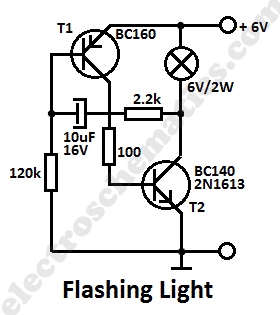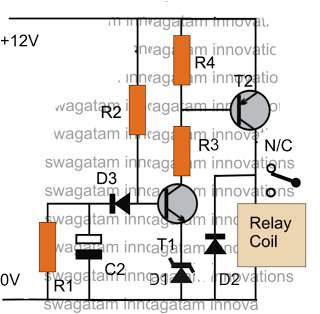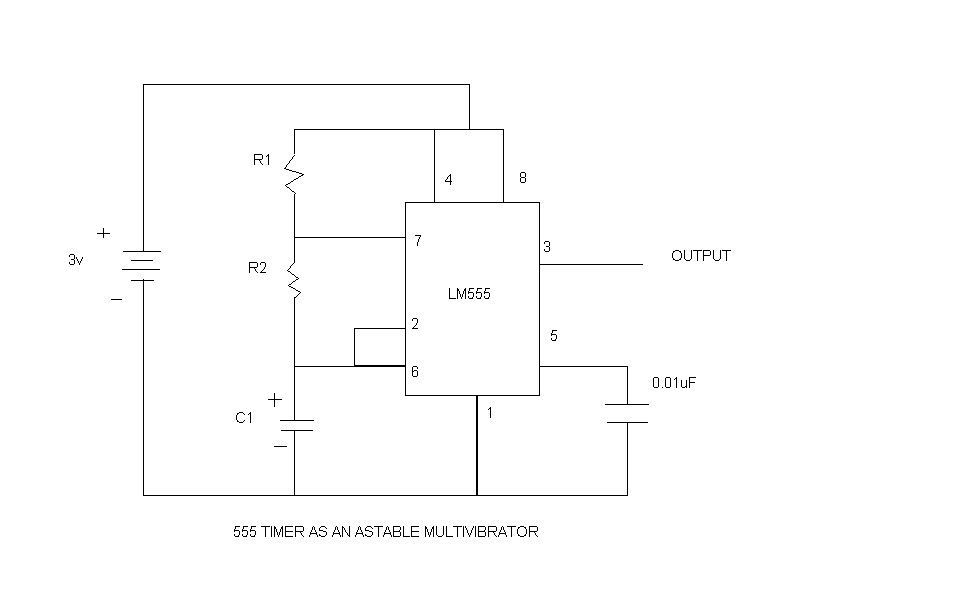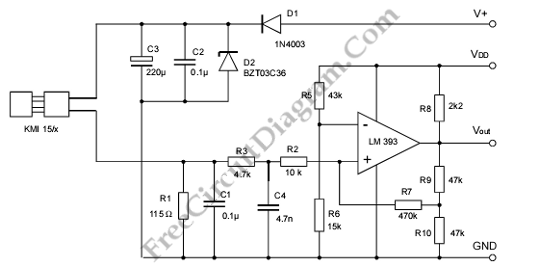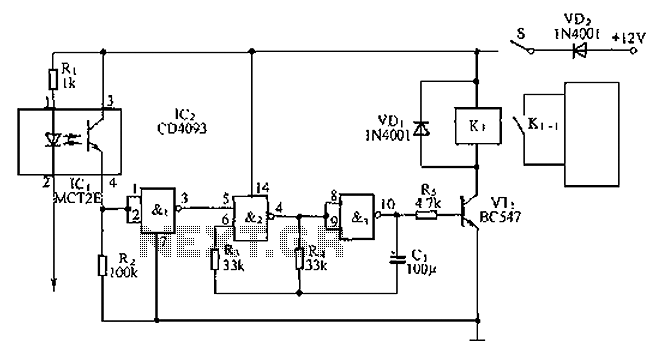
Ultrasonic Cleaner Circuit
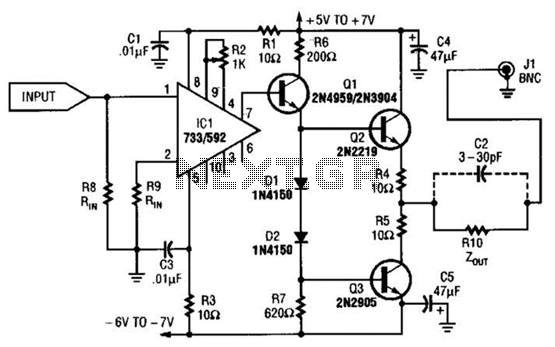
An ultrasonic cleaner is effective for cleaning specific items. This circuit employs a microcontroller to manage timing and provide a digital display, although a basic oscillator can be utilized if preferred. RESL and RES2 are piezoelectric transducers activated by power oscillator Q1. Q1 is powered by a bridge rectifier-capacitor input filter that operates directly from the AC line. The operating frequency ranges from 40 to 60 kHz.
The ultrasonic cleaner circuit is designed to facilitate the removal of contaminants from delicate items using high-frequency sound waves. The core components of the circuit include a microcontroller, piezoelectric transducers, a power oscillator, and a rectification stage.
The microcontroller serves as the central control unit, managing the timing of the ultrasonic cleaning cycles and providing a digital readout of the operational status. It can be programmed to set various cleaning durations, allowing users to customize the cleaning process according to the specific requirements of the items being cleaned.
The power oscillator, designated as Q1 in the circuit, generates the ultrasonic frequency necessary for effective cleaning. Operating within the range of 40 to 60 kHz, this frequency is optimal for creating cavitation bubbles in the cleaning solution. These bubbles implode upon contact with the surfaces of the items, dislodging dirt and contaminants without causing damage.
The piezoelectric transducers, RESL and RES2, convert the electrical signals from the power oscillator into mechanical vibrations. These vibrations propagate through the cleaning solution, creating the ultrasonic waves that facilitate the cleaning process. The arrangement and positioning of these transducers are critical for achieving uniform ultrasonic coverage within the cleaning tank.
The bridge rectifier-capacitor input filter converts the AC line voltage into a suitable DC voltage for powering the oscillator. This stage ensures that the circuit operates efficiently and reliably, providing a stable power supply to the oscillator and transducers.
Overall, this ultrasonic cleaner circuit is a sophisticated yet practical solution for efficiently cleaning delicate items, leveraging the principles of ultrasonic technology to achieve superior cleaning results. Ail ultrasonic cleaner is useful to clean certain items. This circuit uses a microcontroller to control timing and give a digital readout, but only the basic oscillator can be used, if desired. RESL, RES2 are piezoelectric transducers driven by power oscillator Ql. Ql is powered by a bridge rectifier-capacitor input filler that operates directly off the ac line. The frequency is 40 to 60 kHz.
The ultrasonic cleaner circuit is designed to facilitate the removal of contaminants from delicate items using high-frequency sound waves. The core components of the circuit include a microcontroller, piezoelectric transducers, a power oscillator, and a rectification stage.
The microcontroller serves as the central control unit, managing the timing of the ultrasonic cleaning cycles and providing a digital readout of the operational status. It can be programmed to set various cleaning durations, allowing users to customize the cleaning process according to the specific requirements of the items being cleaned.
The power oscillator, designated as Q1 in the circuit, generates the ultrasonic frequency necessary for effective cleaning. Operating within the range of 40 to 60 kHz, this frequency is optimal for creating cavitation bubbles in the cleaning solution. These bubbles implode upon contact with the surfaces of the items, dislodging dirt and contaminants without causing damage.
The piezoelectric transducers, RESL and RES2, convert the electrical signals from the power oscillator into mechanical vibrations. These vibrations propagate through the cleaning solution, creating the ultrasonic waves that facilitate the cleaning process. The arrangement and positioning of these transducers are critical for achieving uniform ultrasonic coverage within the cleaning tank.
The bridge rectifier-capacitor input filter converts the AC line voltage into a suitable DC voltage for powering the oscillator. This stage ensures that the circuit operates efficiently and reliably, providing a stable power supply to the oscillator and transducers.
Overall, this ultrasonic cleaner circuit is a sophisticated yet practical solution for efficiently cleaning delicate items, leveraging the principles of ultrasonic technology to achieve superior cleaning results. Ail ultrasonic cleaner is useful to clean certain items. This circuit uses a microcontroller to control timing and give a digital readout, but only the basic oscillator can be used, if desired. RESL, RES2 are piezoelectric transducers driven by power oscillator Ql. Ql is powered by a bridge rectifier-capacitor input filler that operates directly off the ac line. The frequency is 40 to 60 kHz.
